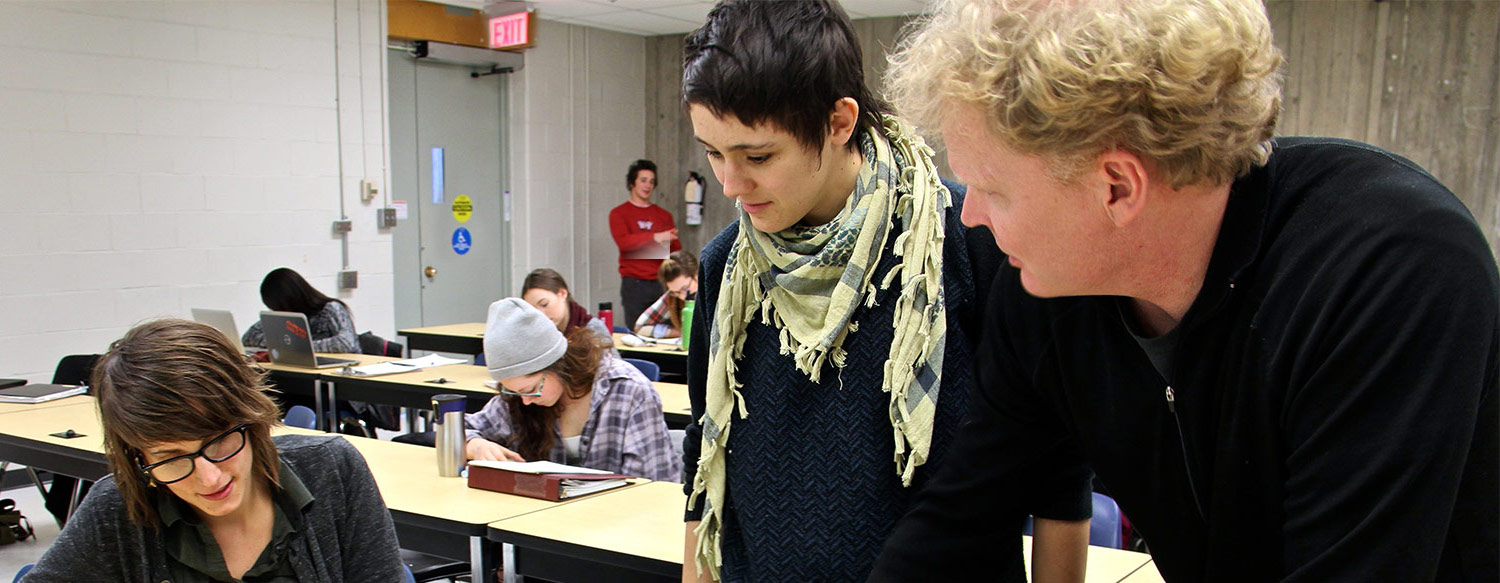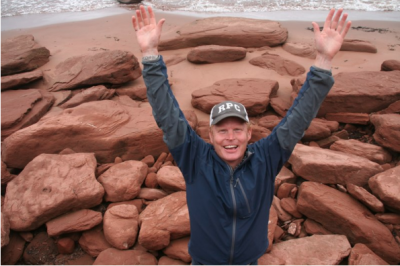by Stephen Hill, Academic Co-lead, Student Pathways for Community Impact Working Group
 As the last of summer dwindles away, university and college professors begin one of their busiest times of year: starting new courses, organizing assignments, labs, seminars and teaching materials, and getting to know students. It’s a wonderful kind of busy, but busy it is.
As the last of summer dwindles away, university and college professors begin one of their busiest times of year: starting new courses, organizing assignments, labs, seminars and teaching materials, and getting to know students. It’s a wonderful kind of busy, but busy it is.
For the past six or seven years, I’ve kick started my fall with a series of service learning opportunities for students in our first year environmental science and studies course. It’s a large course – over 300 students – with the vast majority of students being from outside of Peterborough and not knowing much about the community. As part of the first assignment, students have the opportunity to serve as volunteers for the Haliburton-Muskoka-Kawartha Children’s Water Festival, Transition Town Peterborough’s Purple Onion Festival, the Trent Market Garden, or with bike survey organized by Peterborough GreenUp and the City of Peterborough. Students are asked to write a reflective and critical piece afterward.

Peterborough GreenUp project participants hard at work processing data. ©Elizabeth Thipphawong
The partnerships have emerged organically over the years with different partners gradually joining the mix. The upshot is that over 250 students now have the opportunity to learn about and work with the community in their first month of university. This is so important for building student engagement in the course and with the material. Most importantly from the CFICE perspective, the community partners absolutely depend on the students in their projects.
 But, here’s the thing. Scratch a bit below the surface and what seems like a great venture is, in reality, a huge amount of work during the busiest time of year. I’d be lying if I said there weren’t days that I regret ever agreeing to “see if some students would be interested in helping.” Organizing the logistics of assigning students to volunteer opportunities, insurance waivers, health and safety training, transportation, dealing with colleagues whose classes the students miss to volunteer, trying to ensure our community partners have students that can help, and figuring out some academic rationale for this all is sometimes overwhelming. Added to this mix are the regular challenges that first year students are facing when transitioning to a new setting and the hundreds of emails that circulate in any large course. I feel less like a hard-working teacher and more like a sucker for punishment.
But, here’s the thing. Scratch a bit below the surface and what seems like a great venture is, in reality, a huge amount of work during the busiest time of year. I’d be lying if I said there weren’t days that I regret ever agreeing to “see if some students would be interested in helping.” Organizing the logistics of assigning students to volunteer opportunities, insurance waivers, health and safety training, transportation, dealing with colleagues whose classes the students miss to volunteer, trying to ensure our community partners have students that can help, and figuring out some academic rationale for this all is sometimes overwhelming. Added to this mix are the regular challenges that first year students are facing when transitioning to a new setting and the hundreds of emails that circulate in any large course. I feel less like a hard-working teacher and more like a sucker for punishment.
But I do this work because I think it’s important. I know it’s crucially important for our community partners and I like to think it’s important for the students. The partnerships aren’t perfect and, to be honest, I’ve always been flying by the seat of my pants with these projects. I didn’t even know that “service learning” was a thing until my friends at the Trent Community Research Centre told me about it. There’s certainly no master plan here.
 But now, with the CFICE project, I hope that part of our work on the Student Pathways working group will be to better understand how this type of service learning might fit within a broader curriculum pathway. It might tell us how these students’ service learning experiences prepare them for more complex community-campus engagement. Or maybe there are other more important things that we should be doing to set our students on a path to be successful partners in community-based research. Either way, I’m excited to find out…I guess I really do love September.
But now, with the CFICE project, I hope that part of our work on the Student Pathways working group will be to better understand how this type of service learning might fit within a broader curriculum pathway. It might tell us how these students’ service learning experiences prepare them for more complex community-campus engagement. Or maybe there are other more important things that we should be doing to set our students on a path to be successful partners in community-based research. Either way, I’m excited to find out…I guess I really do love September.